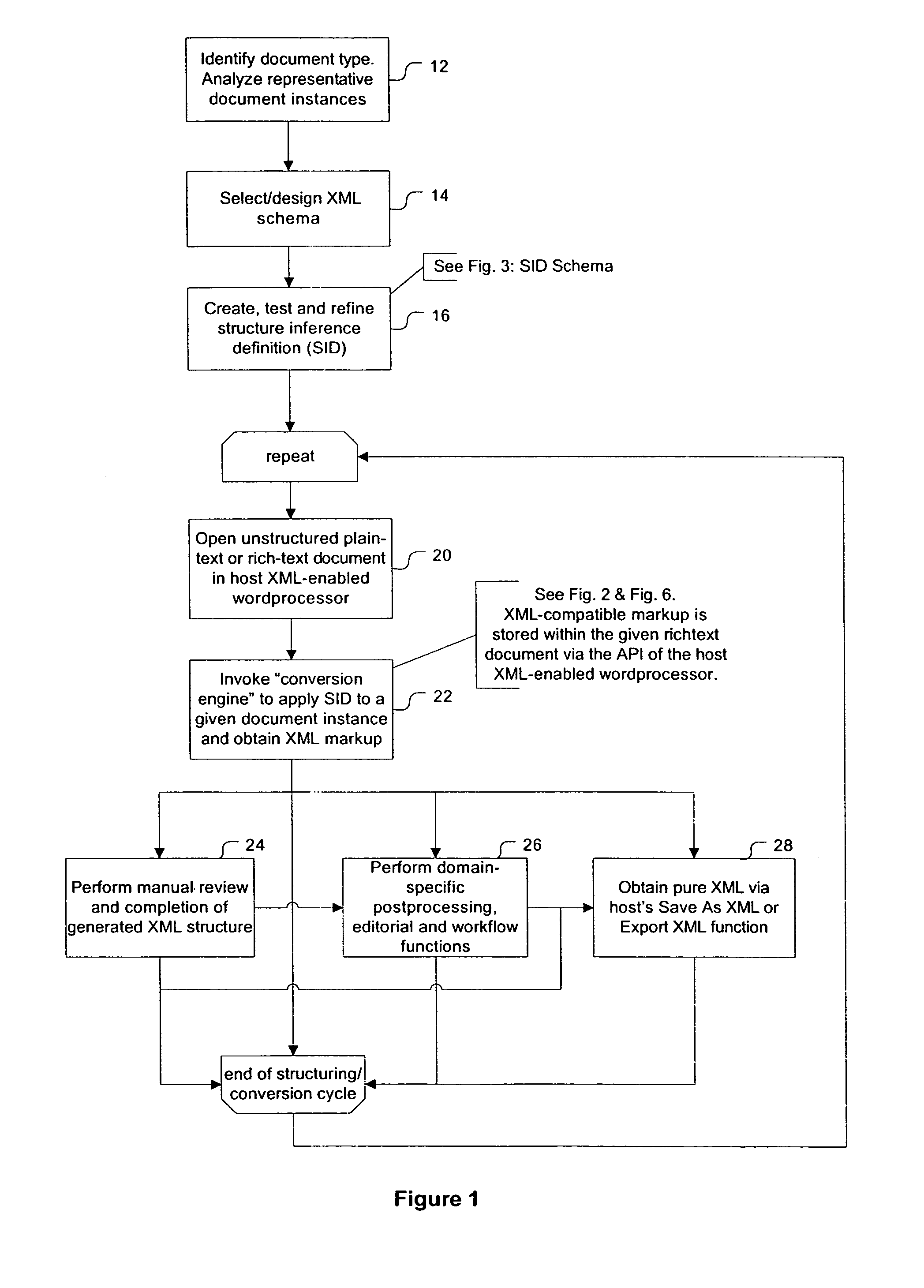Method and system for automated structuring of textual documents
- Summary
- Abstract
- Description
- Claims
- Application Information
AI Technical Summary
Benefits of technology
Problems solved by technology
Method used
Image
Examples
Embodiment Construction
[0037]The present described embodiment is an add-on to Microsoft Word, version 2000 or newer. It consists of two major components: an XML structuring engine, also called conversion engine, and a GUI framework integrated into the workspace of Microsoft Word for development and execution of document conversion definitions (FIG. 16). Microsoft Word 2003 is the first version to have native support for XML markup associated with a custom XML schema in its documents, and there is sufficiently granular API access to the new XML handling capabilities. Thus it qualifies as an XML-enabled generic wordprocessor and allows the XML conversion engine to use its API to parse an open document and apply XML markup to it. HyperVision's Word for Word plug-in augments Microsoft Word 2000 and newer to become an API-enabled, full-fledged XML authoring tool as well. (See screenshot of an XML-structured document in FIG. 15.) The differences between the two XML-related APIs are almost entirely insignificant...
PUM
 Login to View More
Login to View More Abstract
Description
Claims
Application Information
 Login to View More
Login to View More - R&D
- Intellectual Property
- Life Sciences
- Materials
- Tech Scout
- Unparalleled Data Quality
- Higher Quality Content
- 60% Fewer Hallucinations
Browse by: Latest US Patents, China's latest patents, Technical Efficacy Thesaurus, Application Domain, Technology Topic, Popular Technical Reports.
© 2025 PatSnap. All rights reserved.Legal|Privacy policy|Modern Slavery Act Transparency Statement|Sitemap|About US| Contact US: help@patsnap.com



